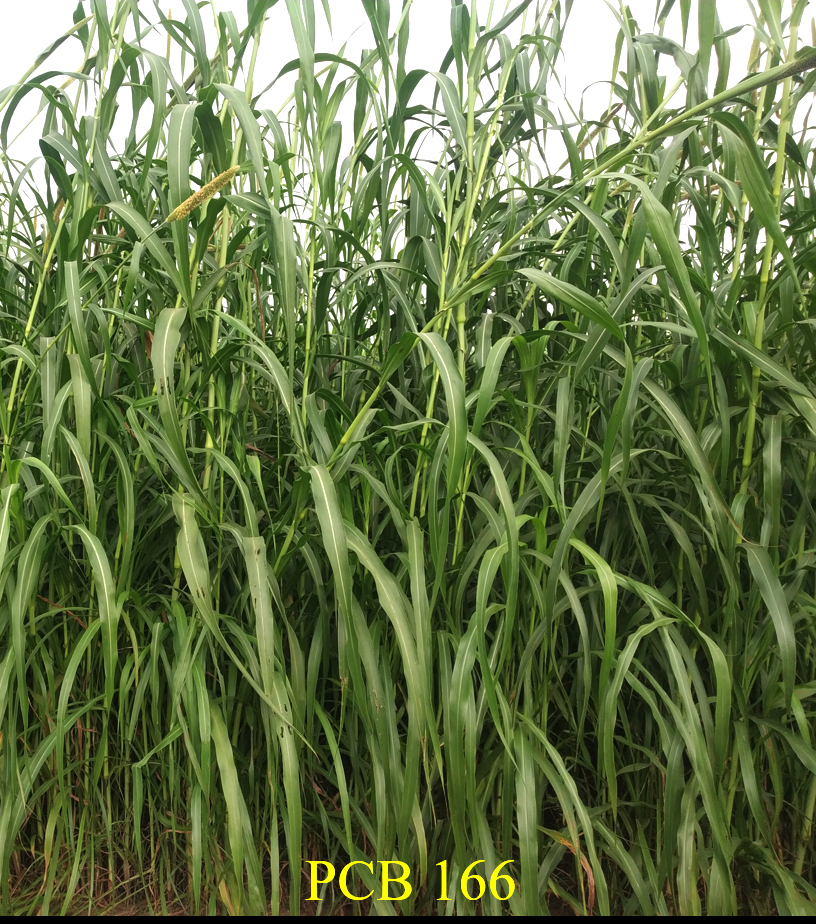Bajra varieties PCB 166, PCB 168, maize variety J 1009 identified for cultivation

PAU’s pearl millet variety PCB 168 has been identified for cultivation in northwest and south zones of India
During the National Group Meet of the Varietal Identification Committee (VIC) of the Indian Council of Agriculture Research (ICAR), held at Palampur, Himachal Pradesh on June 15 and 16, three fodder varieties of Punjab Agricultural University (PAU), Ludhiana have been identified for release.
The VIC identified two fodder bajra (pearl millet) varieties — PCB 166 and PCB 168 — along with one fodder maize variety J 1009, developed by PAU, for release in the national arena. It is the first time that three varieties of fodder crops of PAU are to be released together at the national level.
Giving details about the new bajra variety PCB 166, PAU Director of Research Ajmer Singh Dhatt, “This variety of fodder pearl millet has been identified for release in the northwest and south zones of India including Punjab, Haryana, Rajasthan, Uttarakhand, Tamil Nadu, Telangana and Karnataka states. It is a tall growing, late maturing variety with high fodder yield potential up to 797 quintals per hectare, which outyielded check varieties Giant Bajra, RBB 1 and AFB 3 by 5%, 7% and 6.4% respectively, in the northwest zone. Over the two zones, it outyielded the check varieties Giant Bajra, RBB 1, AFB 3 and Moti Bajra by 13.2%, 21%, 6.4 and 17.5% respectively. This variety has high crude protein content (9.6%) with very good in-vitro dry matter digestibility and is resistant to downy mildew and moderately resistant to leaf blast.”
The PAU Department of Plant Breeding and Genetics head V S Sohu informed that the second fodder pearl millet variety PCB 168 has been identified for release in the northwest zone of India comprising Punjab, Haryana, Rajasthan and Uttarakhand states. “This variety is tall growing that matures late with a fodder yield potential of 721 quintals per hectare. This variety outyielded the check varieties Giant Bajra, RBB 1 and AFB 3 by 6.5%, 8.5% and 7.9%respectively. It possesses very good fodder quality characters, especially the crude protein and in-vitro dry matter digestibility,” he said.
PAU’s Principal Forage Breeder R S Sohu said that fodder variety of maize J 1009 has been identified for central zone of India comprising Uttar Pradesh, Maharashtra, Madhya Pradesh and Chhattisgarh states. He said, “It gives a fodder yield potential of 710 quintals per hectare. This variety outyielded the check varieties J 1006 and African Tall by 10.2% and 19.2% respectively in the zone. It also possesses particularly good fodder quality characters with high crude protein (8.2%) and in-vitro dry matter digestibility.”
PAU vice chancellor Satbir Singh Gosal congratulated the forage and millet improvement team of the Department of Plant Breeding and Genetics led by R S Sohu comprising scientists namely Ruchika Bhardwaj, Devinder Pal Singh, Harpreet Kaur Cheema, Meenakshi Goyal, Maninder Kaur, Ashlesha and Harpreet Kaur Oberoi involved in the development of fodder pearl millet varieties. He also congratulared S K Sandhu, Tosh Garg and Gagandeep Singh associated with the development of the maize variety J 1009.
To read in Punjabi and Hindi, click below.
